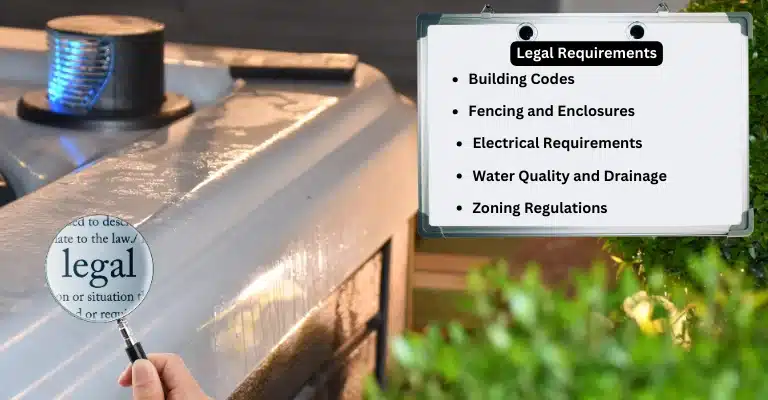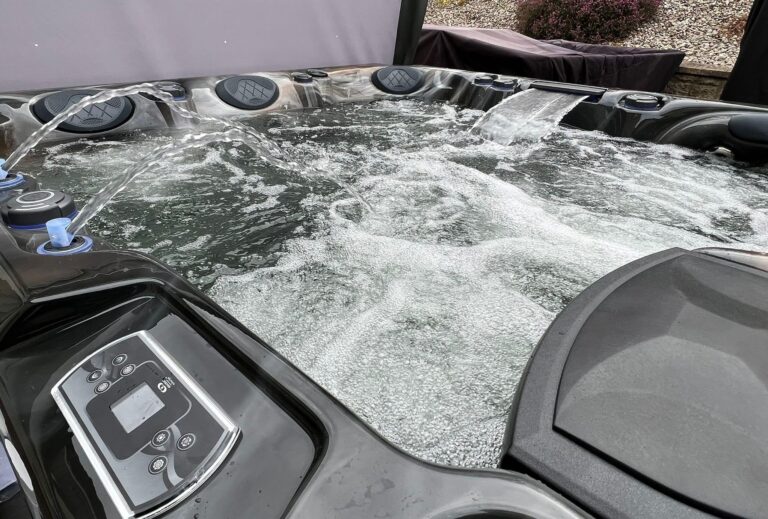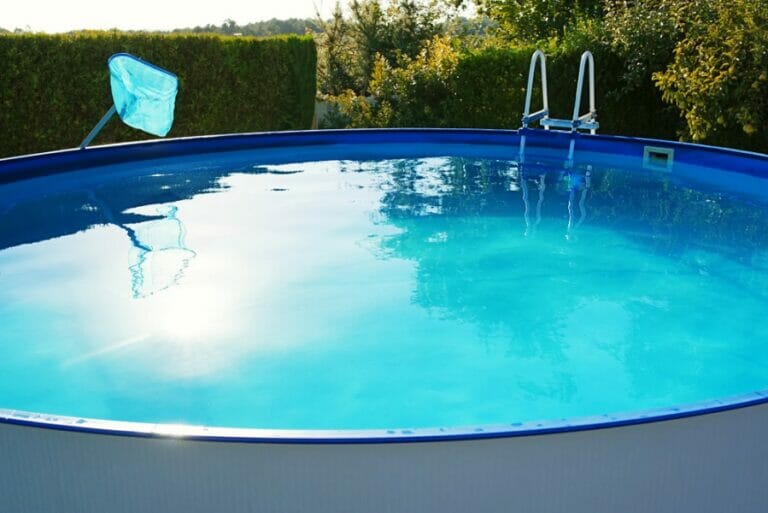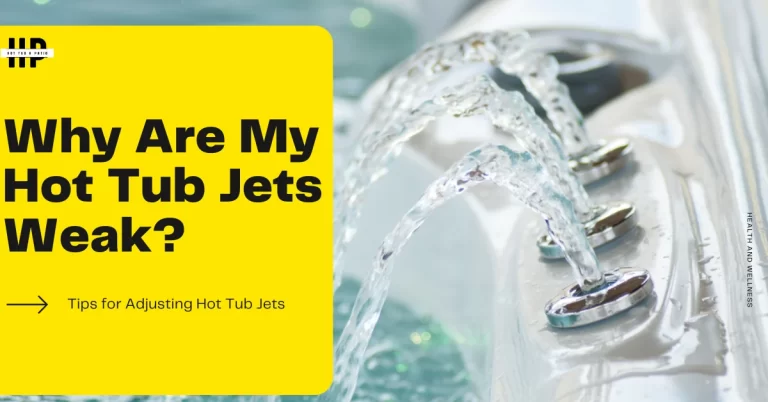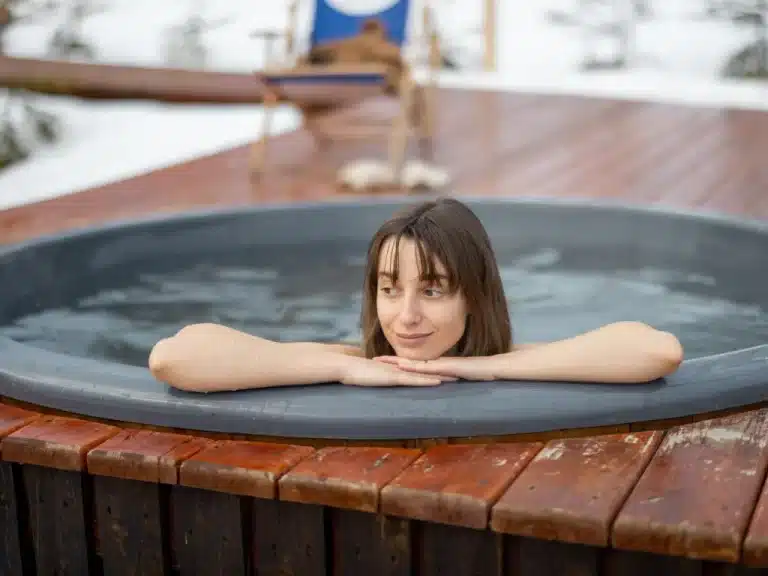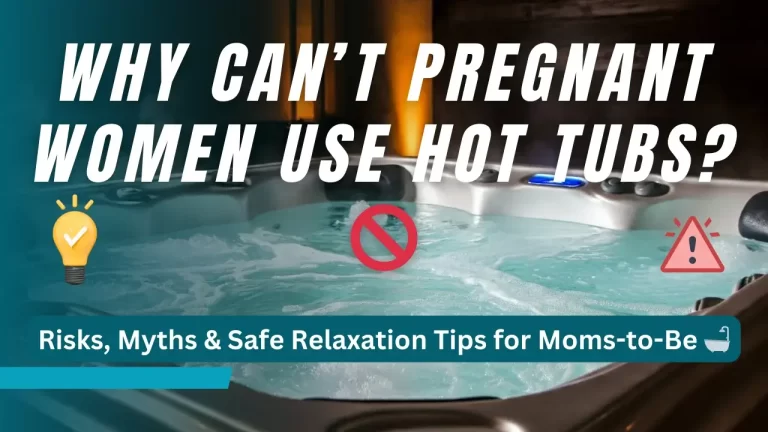Soaking in the Rules: Do you need permit for hot tub
Hot tub installation can be complicated, but understanding the permit process is critical. Our comprehensive guide covers all the permit requirements you need to know before installing your hot tub, so you can relax and enjoy your new addition worry-free.
Hot tubs are a luxurious and enjoyable addition to any backyard, but you must know your area’s legal requirements and regulations before installing one. One question that often comes up is whether you need a permit for a hot tub. This post will explore the answer to that question and provide helpful information on hot tub permits, safety, installation, maintenance, accessories, and more. Whether you’re a hot tub owner or considering getting one, this guide will provide valuable insights to help you enjoy your hot tub safely and legally.
A table with information on hot tub permit requirements by county in the United States:
| County | Permit Required? | Permit Cost | Additional Requirements |
|---|---|---|---|
| Los Angeles | Yes | $399 | Must be installed by a licensed contractor |
| Cook County | Yes | $250 | Minimum setback requirements from property lines and pools |
| Miami-Dade | Yes | $150 | Must comply with Florida Building Code |
| Maricopa County | No | N/A | Must comply with setback requirements and fencing rules |
| Harris County | No | N/A | Must comply with setback requirements and fencing rules |
| King County | Yes | $320 | Must comply with local zoning regulations |
| New York City | Yes | $250 | Must comply with NYC Construction Codes |
| Dallas County | Yes | $225 | Must comply with local zoning regulations |
| Orange County | Yes | $200 | Must comply with California Building Code and local zoning |
| Howard County | Yes | $40-$160 | Must comply with local zoning and building codes |
| Brookhaven Town | Yes | $150-$500 | Must comply with local zoning and building codes |
| Fairfax | Yes | $60-$80 | Must comply with local building codes and zoning regulations |
It’s important to check with your local county government to determine the specific permit requirements and regulations for hot tub installation in your area.
1. Legal Requirements:
If you plan to install a hot tub on your property, you must know the legal requirements that may apply to your situation. Some general guidelines may apply, but please note that specific requirements can vary depending on your location and other factors.
- Building Codes: Hot tubs are often considered a permanent fixture and may be subject to building codes in your area. This may include requirements for electrical wiring, plumbing, and structural support. Check with your local building department to determine if a building permit is required and what specific requirements must be met.
- Fencing and Enclosures: Hot tubs must be enclosed by a fence or other barrier in many areas for safety reasons. The specific requirements for the enclosure may vary, but it is typically intended to prevent unsupervised access by children or animals. Check with your local authorities to determine what specific requirements apply in your area.
- Electrical Requirements: Hot tubs require significant electricity to operate, and the wiring and electrical components must be installed following local codes and regulations. This may include requirements for grounding, GFCI protection, and electrical disconnects. It is vital to have a licensed electrician install and inspect the electrical components to ensure that they meet all applicable requirements.
- Water Quality and Drainage: Hot tubs require regular maintenance to ensure the water is safe. This may include adding chemicals, cleaning filters, and draining and refilling the water periodically. Ensuring that the hot tub is drained correctly and that the water is disposed of following local regulations is essential.
- Zoning Regulations: Depending on your location and the specific zoning regulations that apply, you may be required to obtain a special permit or variance to install a hot tub on your property. This may be particularly true if you live in a densely populated area or your property is subject to strict zoning restrictions.
In summary, if you are considering installing a hot tub, it is essential to research the specific legal requirements that apply in your area. This will help you ensure that your hot tub is installed safely and legally and that you can enjoy it for years.
Here are some things to keep in mind:
A. What is a hot tub permit, and why might you need one?
A hot tub permit is a document that allows you to legally install and operate a hot tub on your property. Some areas require a visa to ensure the hot tub is installed safely and complies with local codes and regulations.
B. How to find out if you need a permit for your hot tub?
The best way to find out if you need a permit for your hot tub is to check with your local government or building department. You can find this information on their website or by calling their office.
C. Hot tub regulations by state/city
Hot tub regulations can vary widely by state and city, so it’s essential to research the specific requirements for your area. Some standard rules include minimum setback requirements from property lines, fencing or other safety measures, and electrical and plumbing codes.
D. Tips for getting a hot tub permit
If you need a permit for your hot tub, obtaining one will vary depending on your location. Here are some tips to help you get started:
- Research the requirements for your area
- Please fill out the necessary paperwork and submit it to the appropriate office
- Have your hot tub installation inspected by a local inspector
- Make any necessary corrections or improvements to ensure compliance with local regulations
By taking the time to research and obtain any necessary permits for your hot tub, you can ensure that your installation is safe and legal and avoid any potential fines or penalties.
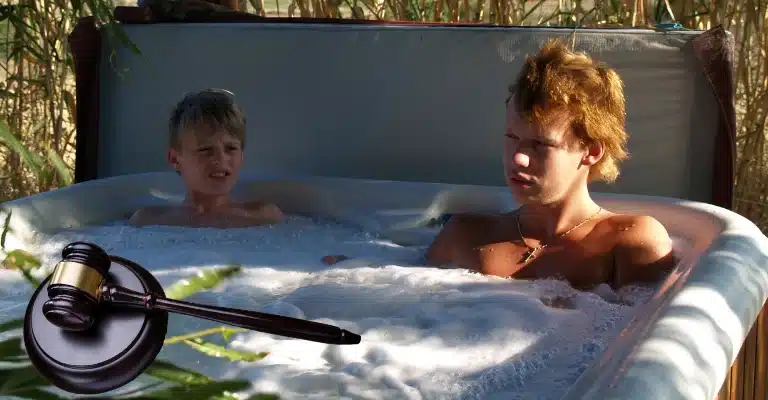
2. Safety
Installing a hot tub is an exciting addition to any backyard, but prioritizing safety is vital to avoid accidents and injuries. Here are some essential safety considerations to keep in mind:
A. Electrical safety
Hot tubs require a significant amount of electricity to operate, so a qualified professional must install all wiring and electrical components and meet local electrical codes. Ensure that all electrical parts, including cords and outlets, are safe from the hot tub to avoid potential hazards.
B. Water Safety
It’s essential to regularly test and maintain the water in your hot tub to ensure it’s clean and free of harmful bacteria or chemicals. Follow manufacturer recommendations for adding chemicals and keeping the water properly balanced. Ensure to secure the hot tub cover when not in use to prevent any accidental drowning or injury.
C. Hot tub cover safety
Hot tub covers can be heavy and difficult to lift, especially for children or those with limited mobility. Consider investing in a cover lift system to make removing and replacing the cover easier.
D. Other safety considerations
Electrical and water safety, there are several other safety considerations when using a hot tub. These include avoiding alcohol consumption while using the hot tub, limiting the amount of time spent in the hot tub to prevent overheating or dehydration, and avoiding using the hot tub alone to ensure that someone is always nearby in case of an emergency.
By prioritizing safety when installing and using your hot tub, you can ensure a fun experience for years.
3. Installation:
Installing a hot tub can be a complex process that requires careful planning and preparation. Here are some key considerations to keep in mind when installing a hot tub:
A. Location
Please choose a location for your hot tub that is flat, level, and able to support the weight of the tub and its occupants. Ensure enough space around the hot tub for easy access and maintenance.
B. Permits and regulations
Before installing a hot tub, you must check with your local government to determine if any permits or regulations are required. Depending on where you live, you may need to obtain a building permit or adhere to specific safety regulations.
C. Foundation
A sturdy foundation is essential for a hot tub installation. Depending on the location, you may need to pour a concrete slab or install a reinforced deck to provide a stable and level base for the hot tub.
D. Electrical and plumbing
Hot tubs require electrical and plumbing connections, so they must be installed correctly and meet local building codes. Hiring a qualified professional to handle the installation can help ensure everything is done safely and correctly.
E. Delivery and placement
Hot tubs are typically delivered by truck and require special equipment to move and place into position. Make sure that the delivery path is clear and free of obstacles and that there is enough space to maneuver the tub into place.
Following these installation guidelines and seeking professional assistance ensures that your hot tub is installed safely and correctly.
4. Maintenance:
Regular maintenance is essential for keeping your hot tub running smoothly and ensuring it remains safe and enjoyable. Here are some necessary maintenance tasks to keep in mind:
A. Water chemistry
Maintaining proper water chemistry is crucial for ensuring the safety and cleanliness of your hot tub. Test the water regularly using a water testing kit and adjust the chemical levels to keep the water balanced and free of harmful bacteria or chemicals.
B. Filter cleaning
Cleaning the hot tub filter is an essential part of regular maintenance. Remove the filter according to the manufacturer’s instructions and rinse it thoroughly to remove any debris or buildup.
C. Cover care
The hot tub cover protects the tub from debris and helps maintain the water temperature, so keeping it clean and in good condition is essential. Wipe down the surface regularly and treat it with a vinyl protectant to prevent cracking or fading.
D. Drain and refill
Draining and refilling the hot tub periodically is essential for maintaining water quality and preventing the buildup of minerals and other contaminants. Follow the manufacturer’s instructions for draining and refilling the tub, and clean and sanitize all surfaces before refilling.
E. Professional servicing
In addition to regular maintenance, having your hot tub professionally serviced regularly is a good idea. A qualified technician can check for potential problems and perform necessary repairs or maintenance tasks.
By following these maintenance guidelines and staying on top of regular maintenance tasks, you can ensure that your hot tub remains safe, clean, and enjoyable for years.
5. Accessories
Adding accessories to your hot tub can enhance your overall experience and make it more convenient. Here are some popular hot tub accessories to consider:
A. Steps and handrails
Steps and handrails provide a safe and easy way to enter and exit your hot tub. Look for accessories made from sturdy materials that can support your weight and are designed to fit your specific hot tub model.
B. Covers and lifts
Covers and lifts make it easy to protect your hot tub when it’s not in use and keep it clean and debris-free. Look for covers and charges that are easy to use and fit securely over your hot tub.
C. Lighting
Adding lighting to your hot tub can create a relaxing and soothing ambiance. Look for LED lighting that can be controlled remotely and offer various color options.
D. Water features
Water features like fountains, waterfalls, and jets can add relaxation and enjoyment to your hot tub experience. Look for water features that can be adjusted to your preferences and are easy to maintain.
E. Entertainment systems
Entertainment systems like speakers and TV mounts can make your hot tub experience more enjoyable. Look for systems that are designed to be waterproof and can be easily controlled from your smartphone or tablet.
Adding these accessories to your hot tub allows you to create a customized and enjoyable experience that meets your specific needs and preferences. Check with your hot tub manufacturer or local regulations to ensure that any accessories you add are safe and comply with all relevant laws and regulations.
Conclusion:
Before you invest in a hot tub, it’s essential to understand the legal requirements, safety considerations, installation process, maintenance needs, and accessory options. By researching and understanding these factors, you can ensure you get the most out of your hot tub and enjoy it for years.
Remember that hot tubs are not only a source of relaxation and enjoyment but also require a certain level of responsibility. Be sure to follow all relevant laws and regulations, regularly maintain your hot tub, and take steps to ensure that it’s safe for you and your family to use.
By following these tips and guidelines, you can decide whether a hot tub is suitable for you and enjoy all its benefits.
🔍 Want more info? Head over to Hot Tub Patio 🛁 or check our Guides 📖 for extra reading!
FAQs: (do you need permit for hot tub)
Q. Do I need a permit to install a hot tub? The answer to this question varies depending on where you live. Some areas require a receipt for hot tub installation, while others do not. You must check with your local government or hot tub manufacturer to determine whether a license is required.
Q. Are hot tubs safe? Hot tubs can be safe if they are appropriately used and maintained regularly. However, there are some safety considerations to remember, such as ensuring that the hot tub is installed on a level and sturdy surface, periodically testing the water for proper chemical balance, and ensuring that children are supervised when using the hot tub.
Q. How often should I clean my hot tub? It’s essential to clean your hot tub regularly to prevent the buildup of bacteria and other contaminants. Generally, it would be best to wash your hot tub every 3-4 months or as the manufacturer recommends. This may involve draining the water, scrubbing the surfaces, and replacing the filters.
Q. What accessories should I consider for my hot tub? Many accessories are available for hot tubs, such as steps, handrails, covers, lighting, water features, and entertainment systems. The accessories you choose will depend on your personal preferences and needs.
Q. How much does it cost to operate a hot tub? The cost of running a hot tub will vary depending on factors such as the hot tub size, the frequency of use, and the local cost of electricity. On average, it may cost $20-$30 per month to operate a hot tub.
Relevant sources
Relevant sources from the US government related to hot tubs:
- Consumer Product Safety Commission (CPSC) – The CPSC is a federal agency responsible for ensuring that consumer products, including hot tubs, are safe for use. Their website provides information on hot tub safety, including safety tips and product recalls.
- Environmental Protection Agency (EPA) – The EPA protects public health and the environment. Their website provides hot tub water quality information, including guidelines for maintaining proper chemical balance in the water.
- Occupational Safety and Health Administration (OSHA) – OSHA is a federal agency responsible for ensuring workplace safety. Their website provides information on workplace safety related to hot tubs, including guidelines for proper installation and maintenance.
- Department of Energy (DOE) – The DOE promotes energy efficiency and renewable energy. Their website provides information on energy-efficient hot tubs and how to reduce energy costs associated with hot tub use.
- Local Building and Zoning Departments – Local building and zoning departments enforce building codes and zoning regulations related to hot tub installation. It’s essential to contact your local department to determine whether a permit is required for hot tub installation and to ensure that you comply with all relevant regulations.







